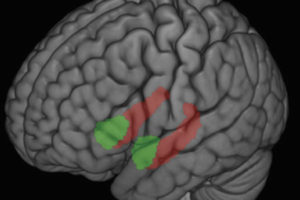Biologists, engineers, physicists and neuroscientists are joining forces to uncover the mechanisms by which early experience impacts the development and function of the human brain. The distinguished group of researchers today announced a five-year, $10 million award from the National Institute of Mental Health (NIMH) to establish a new Silvio O. Conte Center for Basic and Translational Mental Health Research on the University of Wisconsin–Madison campus, which will support their efforts.
The new center gives the diverse team an opportunity to work together to reveal the pathological pathways that lead to mental disorders such as anxiety and depression. Bringing insights and tools from each scholarly perspective, they will be able to trace the roots of mental disorders from their cellular basis to brain function and structure and then examine how these variations in brain circuits later affect emotion and behavior.
While the medical community recognizes a correlation between early-life stress and emotional health, no one has ever described the way in which early adversity affects the way the brain works. The new Conte Center focuses on illuminating the circuitry that connects the amygdala, a brain region important for the ‘fight or flight’ response, with sectors of the prefrontal cortex, which are associated with the regulation of emotion. The strength of the network and communication between the two areas appears to play a key role in the development of anxious temperament, a known precursor to mental illness.
Based at the Center for Healthy Minds at the Waisman Center, the new Conte center grant supports three major efforts:
- Non-invasive studies, using functional, diffusion and structural MRI and other tools, to measure response to stressors in the developing brain beginning in infancy;
- Molecular studies to characterize anxious temperament at a cellular level, using induced-pluripotent stem cells derived from adolescent skin or blood cells;
- A study of genetically identical twins to describe how experience and environment cause differences in how the brain functions and in which genes are differentially expressed.
“This work will uncover new targets for early interventions to prevent anxiety-related disorders, which exact enormous social, emotional and economic burdens in adolescence and early adulthood,” says Principal Investigator Richard Davidson, who is leading the effort. “Ultimately, this new knowledge will inform the diagnosis and treatment of mental disorders and lead to new neurally-inspired interventions.”
The path that leads to anxiety and other mental disorders has been shrouded in mystery, says Su-Chun Zhang, a stem cell researcher at the UW–Madison’s Waisman Center and one of the lead scientists on the program.
“Anxiety is a high-order – or high disorder – brain function, and we’ve never really understood how it develops,” he says, pointing out that you can’t just sample the brain cells of an anxious patient. “Using stem cells, now we can finally get to the bottom of it: the cellular and molecular level.”
Using induced-plurpotent stem cells derived from skin or blood cells, Zhang says his team will be able to put amygdala cells and cells from the prefrontal cortex together in a petri dish, and watch them communicate.
On another level of the study, the researchers will be able to “see” into the brain as it develops over the first two years of life, non-invasively, using state-of-the-art imaging techniques, like functional MRI. The study will use two groups of new mothers, one happy and healthy, one more stressed; and follow their children as they develop.
“We’re going to be looking at how these very early experiences literally get under our skin and affect our brains and bodies,” Davidson says.
On yet another level, by observing pairs of genetically identical twins who experience differing levels of stress, researchers will be able to determine some of the epigenetic causes of mental illness. Looking at the pathology from all of these different vantage points ultimately will lead to more effective interventions, including drugs or other therapies.






